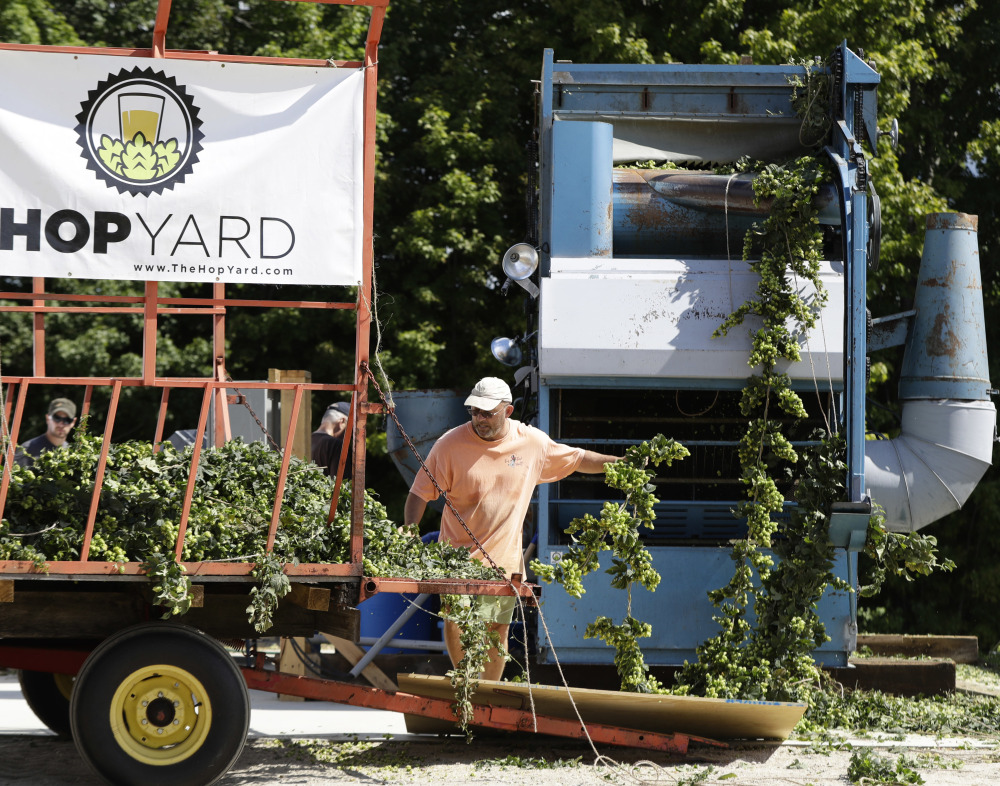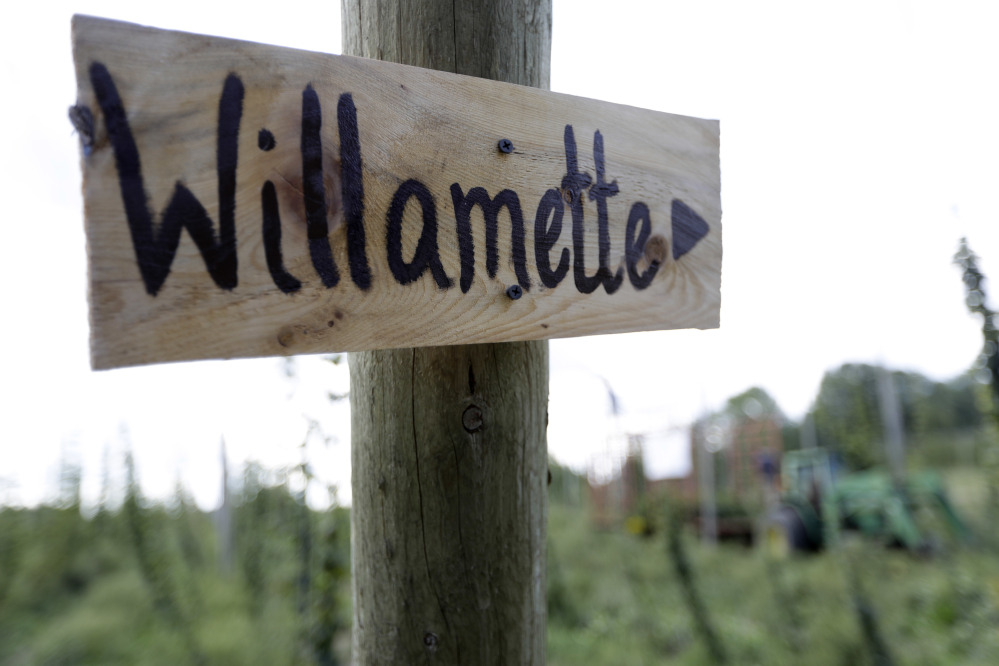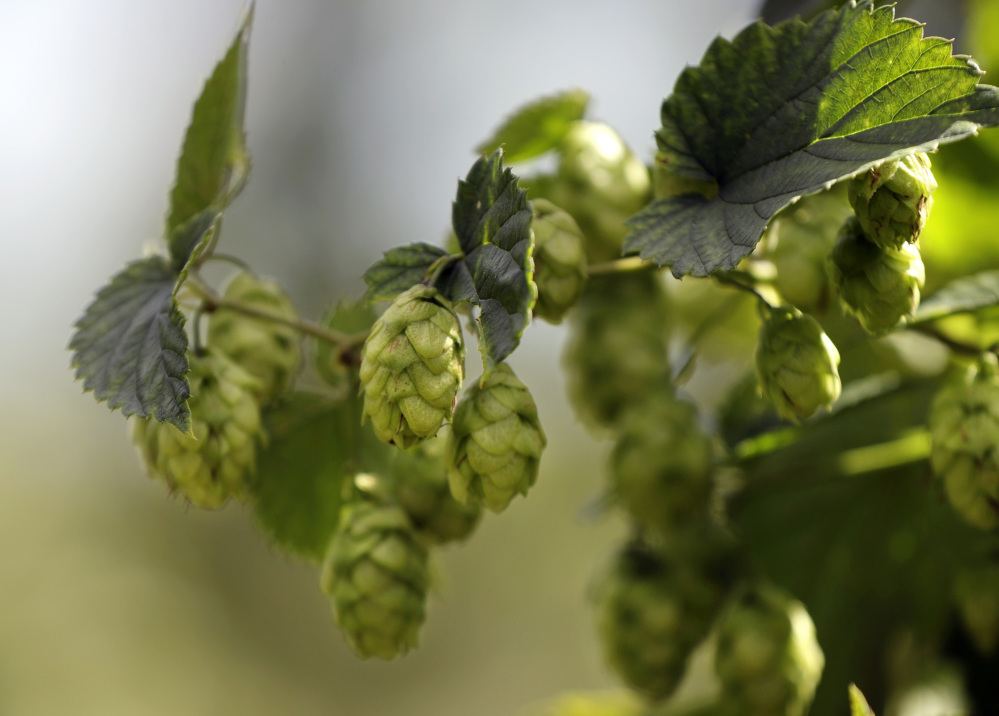GORHAM — Geoff Keating grows a prized plant at the northeastern edge of the country, some 3,000 miles away from the region of America most associated with his crop – hops.
Americans’ growing thirst for bitter, flavor-packed styles of beer has brought an unprecedented demand for hops, so growers are looking to new places to harvest its flowers.
Hops are used to provide bitterness, aroma and flavor to beer. In the U.S., the vast majority are grown in Washington state, with significant numbers grown in Oregon and Idaho. But hop growers in states like Michigan, New York and Maine, where Geoff Keating runs the Hop Yard farms in Gorham and Fort Fairfield, are starting to ramp up production.
The growth dovetails with craft beer’s growth, and its passion for using local ingredients.
“As far as Maine-grown hops, anything done at good quality that’s coming out of Maine is being used by brewers,” Keating said. “We have limited supply.”
The demand for hops is high, in part, because of America’s obsession with India pale ales, which use large amounts of hops to create flavors and aromas that recall fruit and pine. Total U.S. hop acreage grew by almost 20 percent to more than 53,000 acres this year, according to the Hop Growers of America. And brewers still often gripe about shortages of some hop varieties.
In the U.S., the amount of acreage outside of the Pacific Northwest states grew from less than 900 in 2014 to more than 1,200 last year to nearly 2,100 this year, the growers association noted. Michigan’s acreage doubled to 650 this year, and Wisconsin’s grew by nearly 75 percent to almost 300 acres.
“We are certainly getting a lot of calls from people saying they would like to be hop growers,” said Jaki Brophy, spokeswoman for the growers association. “There has been an interest in growing outside of the Pacific Northwest.”
Prices for hops have also been high in recent years, even as the total amount of hop acreage and pounds of hops produced hits record highs. The price of hops can vary widely based on the variety – there are hundreds, some of which are proprietary – but the average price of U.S. hops rose from $3.67 to $4.38 per pound last year.
The availability of hops can be a concern for brewers, especially those who trade in hoppy beer, and local growing can help make a difference, said Tim Adams, brewmaster of Oxbow Beer in Portland.
“The collective palate of the world is way into very hoppy beers – IPAs and double IPA,” Adams said. “It’s a naturally limited resource and demand seems to be increasing at a rate that is much greater than supply.”
The production outside of the Pacific Northwest hasn’t yet reached the level where it can make a dramatic impact on the national hop trade. And big brewers like Anheuser-Busch, which are the rival of craft beer and take up much more of the U.S. beer market, are potentially less impacted by fluctuations in the availability of hops.
Anheuser-Busch also operates its own hop farms, in the U.S., Germany and Argentina. The growth of hops in places like Michigan and Maine is unlikely to affect the company or other beer giants.
But Bart Watson, chief economist with the Brewers Association, which represents 3,200 beer makers from bucket brewing operations to regional players, said the spread of hops around the country reflects a growing interest in locally sourced beer. He expects the trend to continue.
Pat Tiernan, chief operating officer of Escondido, Calif.-based Stone Brewing Co., said it’s possible that hops grown outside of traditional areas might impart a slightly different flavor or aroma. He said players in craft beer are watching.
“In new areas, you’ve got to keep your ear to the ground,” he said.
Copy the Story LinkSend questions/comments to the editors.





Success. Please wait for the page to reload. If the page does not reload within 5 seconds, please refresh the page.
Enter your email and password to access comments.
Hi, to comment on stories you must . This profile is in addition to your subscription and website login.
Already have a commenting profile? .
Invalid username/password.
Please check your email to confirm and complete your registration.
Only subscribers are eligible to post comments. Please subscribe or login first for digital access. Here’s why.
Use the form below to reset your password. When you've submitted your account email, we will send an email with a reset code.